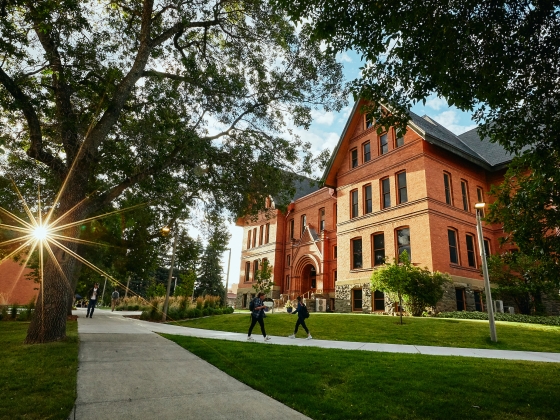BOZEMAN — Montana State University officially opened its interdisciplinary research facility dedicated to the study of quantum computing Aug. 20. Called QCORE, or Quantum Collaborative Research and Education, the high-tech facility is housed in MSU’s College of Letters and Science and positions the university to identify and address grand challenges in quantum systems.
Quantum computing is widely regarded as an emerging frontier in the computing sector. Quantum physics deals with the behavior of very small particles, smaller even than the protons and neutrons most people know as the parts that make up atoms. Scientists – including those at MSU’s Spectrum Lab and MonArk Quantum Foundry – are discovering how to manipulate quantum particles to create faster, more sensitive, more precise and more secure systems in electronics, including sensors, location systems, computers and medical equipment.
“As I think about myself as the president of Montana State University, I’m so excited by the fact that we are positioned as a global leader in quantum,” Brock Tessman, president of MSU, said at the facility’s ribbon cutting ceremony and the kickoff to the three-day Grand Challenges in Quantum Systems Summit hosted by QCORE. “And as I think about myself as a Montanan or an American, I’m thrilled and proud because of the way quantum can position us so that we can better protect Montana food security, productivity, homeland security and national security interests overseas. All of that is a reflection of the work that occurs through this partnership.”
Tessman spoke before a crowd of MSU faculty, staff and students, as well as individuals and representatives of about 60 outside organizations and companies, some of whom have signed on as partners with QCORE. According to QCORE Director Jayne Morrow, the partnerships will result in the facility conducting sponsored research to support companies that will build quantum computers and their components.
“QCORE is a resource to help you reach into this brand-new market and this brand-new economy as it stands up,” Morrow said. “We want you to see us as a partner in that new journey for your companies and, working together, creating a greater awareness of opportunity going forward.”
Part of QCORE’s mission is to nurture scientists and entrepreneurs attempting to incorporate advances in quantum technology into useful components and devices, she said. QCORE’s mission also includes research translation, providing a business incubator for startups and developing workforce education programs for K-12 and up.
Michael J. Hayduk, deputy director and information directorate of the Air Force Research Laboratory, delivered one of two keynote addresses.
“The Air Force Research Laboratory is so proud to be a part of this,” Hayduk said. “Quantum is certainly a priority within the federal government.”
Located in the EngineWorks Bozeman building on MSU’s Innovation Campus, QCORE’s origin traces back to $44.7 million in funding from the Air Force Research Laboratory.
Jacob Taylor, adjunct professor of physics in the Institute for Advanced Computer Studies at the University of Maryland, delivered a separate keynote address. Other speakers included Marta Bertoglio, director of the Montana Department of Commerce, and Terry Cunningham, mayor of Bozeman. The summit included multiple panel discussions exploring various aspects of quantum computing.
Morrow said MSU is the world’s first university to have a Rigetti Novera superconducting quantum computer, and it’s the first university in the U.S. with an ORCA photonic quantum computer. QCORE has one of only five quantum network test beds in the world and, according to Morrow, is one of only seven organizations in the world to house two different types of quantum computers: photonic and superconducting. The equipment is expected to enable MSU researchers and innovators to test a broad swath of experimental components to advance hardware design and development, Morrow said.
“The future is yet to be written,” Tessman said during his remarks. “Many of the people who will write that future are in this room today.”


